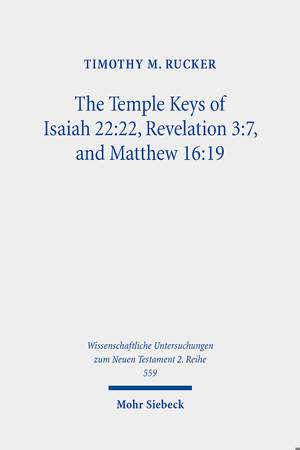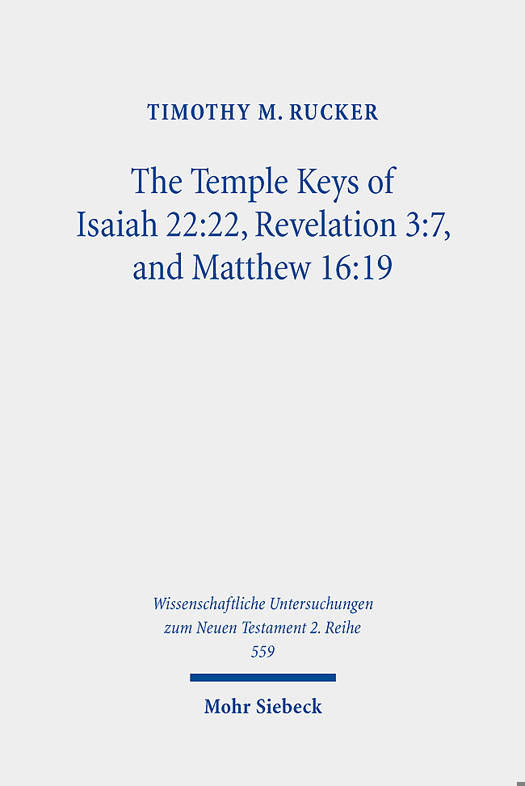
- Afhalen na 1 uur in een winkel met voorraad
- Gratis thuislevering in België vanaf € 30
- Ruim aanbod met 7 miljoen producten
- Afhalen na 1 uur in een winkel met voorraad
- Gratis thuislevering in België vanaf € 30
- Ruim aanbod met 7 miljoen producten
Zoeken
The Temple Keys of Isaiah 22:22, Revelation 3:7, and Matthew 16:19
The Isaianic Temple Background and Its Spatial Significance for the Mission of Early Christ Followers
Timothy M Rucker
€ 93,95
+ 187 punten
Omschrijving
Timothy Rucker demonstrates in this study that the temple was a key background for Shebna's position and offense in Isa 22:15-25, which opens a new door for reconsidering the allusions in Rev 3:7-13 and Matt 16:18-19. He uses intertextuality and critical spatiality in order to interpret these allusions and their potential implications for the conception of sacred space among some early Christ followers. The open door of Rev 3:8 is an opportunity to reclaim potential sacred space for God on earth, so that others may become God's sacred space as well. In Matt 16:18-19, Peter's key foundational role is to provide teaching that will lead to both Jesus' assembly manifesting the righteousness of the kingdom on earth and to other Jews following Jesus as the Messiah. Thus, the temple imagery of Isa 22:22 encourages missionary engagement in both New Testament contexts.
Specificaties
Betrokkenen
- Auteur(s):
- Uitgeverij:
Inhoud
- Aantal bladzijden:
- 243
- Taal:
- Engels
- Reeks:
- Reeksnummer:
- nr. 559
Eigenschappen
- Productcode (EAN):
- 9783161610295
- Verschijningsdatum:
- 1/11/2021
- Uitvoering:
- Paperback
- Formaat:
- Trade paperback (VS)
- Afmetingen:
- 231 mm x 155 mm
- Gewicht:
- 3755 g

Alleen bij Standaard Boekhandel
+ 187 punten op je klantenkaart van Standaard Boekhandel
Beoordelingen
We publiceren alleen reviews die voldoen aan de voorwaarden voor reviews. Bekijk onze voorwaarden voor reviews.











